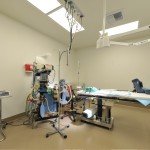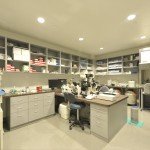About
Success
Treatment
Financial
Resources
Blog
Contact
Site Tools

Resources
- Thank You For Registering To Our ON-DEMAND Seminar!
- Patient Test Form
- Thanks For Authorizing Medical Records Disclosure
- Patient Advocate Program
- Coastal Fertility Blog
- Coastal Fertility News
- Press Room
- Frequently Asked Questions
- Tips for Coping With Infertility
- Glossary of Terms
- Photo Gallery
- Medical Records Request Use
- New Patient Forms
- Online Resources & Links
Glossary of Terms
The doctors and staff at Coastal Fertility in Irvine, California want to help you understand the language associated with infertility treatment. Feel better suited to communicate with your fertility specialists about IVF: in vitro fertilization, PGD: preimplantation genetic diagnosis, and general fertility-related topics. If you have a question about something that isn’t covered here, please contact us.
A B C D E F G H I K L M O P R S T U V W X Y Z
Free Fertility Seminar
Attend a free infertility seminar in Irvine, California covering in-depth topics such as in vitro fertilization, preimplantation genetic diagnosis and other fertility concerns. RSVP to learn the basics of infertility and meet the team at Coastal Fertility.
Adhesion
Amenorrhea
Androgens
Antibodies
Antisperm Antibodies (ASA)
Artificial Insemination
Assisted hatching
Asthenospermia
Azoospermia
Autoimmune
Basal Body Temperature Test (BBT)
Biphasic
Blastocyst
Capacitation
Cervical Cultures
Cervical Mucus
Cervical Stenosis
Cervix
Chlamydia
Chromosome
Conception
Controlled Ovarian Hyperstimulation
Corpus Luteum
Cryopreservation
Diethylstilbestrol (DES)
Donor Insemination
Donor Oocyte
Donor sperm
Ectopic Pregnancy
Ejaculate
Egg
Egg Retrieval
Embryo
Embryologist
Embryo Replacement
Embryo Transfer
Endometriosis
Endometrium
Endometrial Biopsy
Epididymus
Estrogen
Fallopian Tube
Fertilization
Fetus
Fibroid Tumors (or Myomas)
Fimbria
Folic acid
Follicle
Follicular Phase
Follicle Stimulating Hormone (FSH)
Frozen Embryo Transfer (FET)
Gamete
Gamete Intrafallopian Transfer (GIFT)
Gestation
GnRH
Gonads
Gonadatropins
Gonorrhea
Hamster Test
Human Chorionic Gonadotropins (HCG)
Hypergonadism
Hyperstimulation (Ovarian Hyperstimulation Syndrome)
Hyperthyroidism
Hypothalamus
Hypothyroidism
Hysterosalpingography (HSG)
Hysteroscopy
Idiopathic Infertility
Implantation
Infertility
Intracytoplasmic sperm injection (ICSI)
Intramuscular Injection
Intrauterine insemination
In Vitro Fertilization (IVF)
In Vitro Fertilization/Embryo Transfer (IVF-ET)
Kallman’s Syndrome
Karyotype
Karyotyping
Klinefelter’s Syndrome
Laparoscopy
Luteinizing hormone (LH)
Lupron
Luteal Phase
Luteal phase defect
Meiosis
Menstruation
Menopause
Microsurgical Epididymal Sperm Aspiration (MESA)
Miscarriage (MC, m/c)
Morphology
Morula
Motility
Myoma
Myomectomy
Oocyte
Oligo-Ovulation
Oligospermia
Ovarian Failure
Ovarian reserve
Ovaries
Ovulation
Ovulation induction
Ovulatory Dysfunction
Ovum
Pelvic Inflammatory Disease (PID)
Pituitary Gland Placenta
Polycystic ovarian Syndrome
Polyp
Post-Coital Test (PCT)
Preimplantation Genetic Diagnosis (PGD)
Premature Ovarian Failure
Progesterone
Prolactin
Prostate
Provera
Recombinant FSH
Recurrent pregnancy loss
Reproductive Endocrinologist (RE)
Retrograde ejaculation
Retroverted Uterus
Rh Factor
Rhogam (Anti-D)
Salpingitis
Scrotum
Secondary Infertility (SI)
Seminal Vesicle
Semen
Semen Viscosity
Septate uterus
Sonogram (Ultrasound)
Sonohystogram
Sperm (Spermatozoa)
Spermatogenesis
Sperm Count
Sperm Morphology
Sperm Motility
Sperm Penetration Assay (SPA)
Sperm Washing
Split Ejaculate
Spontaneous Abortion
Superovulation
Systemic Lupus Erythematosus (SLE)
Testicular Sperm Aspiration (TESA)
Testicular Sperm Extraction (TESE)
Testicles
Testicular Mapping
Testosterone
Thyroid Gland
Trans-vaginal Aspiration
TSH
Tubal Ligation
Tubal Patency
Tubal Pregnancy
Tubal Reversal
Turner’s Syndrome
Ultrasound
Umbilical Cord
Urologist
Uterine receptivity
Uterine Septum
Uterus
Vagina
Varicocele
Vas Deferens
Vasectomy
Vasogram
Viscosity
Vulva
Zona Pellucida
Zygote
Zygote Intrafallopian Transfer (ZIFT)
A B C D E F G H I K L M O P R S T U V W X Y Z
A
Adhesion: Scar tissue band attached to organ surfaces, capable of connecting, covering or distorting organs, such as fallopian tubes, ovaries, uterus, and bowel.
Amenorrhea: The absence of menstruation.
Androgens: Male sex hormones such as testosterone and DHEAS.
Antibodies: Chemicals made by the body to fight or attack foreign substances entering the body. Normally they prevent infection; however, when they attack the sperm or fetus, they cause infertility. Sperm antibodies may be made by either the man or the woman.
Antisperm Antibodies (ASA): Antibodies are produced by the immune system to fight off foreign substances, like bacteria. Antisperm antibodies attach themselves to sperm and inhibit movement and their ability to fertilize. Either the man or the woman may produce sperm antibodies
Artificial Insemination: Any of the various techniques whereby sperm are introduced to the female by means other than sexual intercourse.
Assisted hatching: Thinning of the embryo’s outer egg shell (zona pellucida) prior to embryo transfer. Indicated for couples with advanced maternal reproductive age, elevated FSH levels, and prior repetitive IVF failures.
Asthenospermia: Decreased number of motile sperm in the ejaculate.
Azoospermia: The complete absence of sperm. It can result from obstruction of the vas deferens (the duct that carries the sperm from the testicles to the urethra) or from failure of the testes to produce sperm. MESA and TESE are two procedures to obtain sperm from azoospermic males.
Autoimmune: An immune reaction against one’s own tissue
B
Basal Body Temperature Test (BBT): Indirect evidence of ovulation can be obtained with the basal body temperature chart. The temperature can be taken orally with a special thermometer immediately upon awakening and before any activity. This is recorded on a special graph that enables you to visualize the different temperature shifts. The temperature will drop to its lowest point, 1-2 days prior to ovulation, and then rises and remains elevated until a couple of days before impending menstruation. If the individual is pregnant the temperature will remain elevated. This elevation is not considered a fever because it will never exceed 38ºC (100ºF). This test is unfortunately not very reliable in every woman, and is therefore not used universally.
Biphasic: A two-level BBT record, which shows a rise in temperature and is suggestive of ovulation.
Blastocyst: An embryo that has undergone multiple cellular divisions with the formation of a cavity within it. A fertilized egg reaches the blastocyst stage usually 4 to 5 days after fertilization occurs.
C
Capacitation: The changes that a sperm goes through to be capable of penetrating the layers covering the egg. It involves the sequentially timed release of a series of enzymes, which allows the sperm to digest a passage through those layers.
Cervical Cultures: The process of obtaining samples (of secretions) from the cervix and culturing them on special media for different types of infectious organisms such as Chlamydia, Gonococcus and Ureaplasma. These sexually transmitted diseases, if present, can cause infertility by damaging the fallopian tubes or can interfere with implantation of the embryo by infecting the lining of the uterus. They are easily treated with antibiotics.
Cervical Mucus: Cervical mucus is secreted by glandular cells that are present in the cervix. This mucus protects the uterus from invasion by bacteria present in the vagina. It also plays an important role in infertility. The cervical mucus, in response to the estrogen hormone, becomes thin and elastic at the time of ovulation. This allows the sperm to travel through the cervix and the uterus to reach the egg in the fallopian tube. It also helps the sperm to stay alive in the cervix for a longer period of time. A thick and dense mucus could prevent the passage of sperm through the cervix. The cervical mucus is checked by the Postcoital test.
Cervical Stenosis: Narrowing of the cervical canal in such a way that menstrual flow can partially or completely be impeded. It is often the result of cervical injury due to surgery such as cone biopsy done for an abnormal Pap smear. It can cause infertility by hampering the normal passage of sperm through the cervix, and can often be treated by intrauterine insemination that bypasses the cervix altogether.
Cervix: The lower section of the uterus that protrudes into the vagina and dilates during labor to allow the passage of the infant.
Chlamydia: A bacteria responsible for a sexually transmitted infection that can affect the tubes by causing permanent damage and thus infertility. Often occurs without significant symptoms.
Chromosome: The nuclear structure of every living cell. Every human cell has normally 46 chromosomes. These chromosomes are made up of genes that govern all of the body’s functions, and are also responsible for all the physical characteristics of an individual. Human gametes (i.e. eggs and sperm) contain only 23 chromosomes. When unified during fertilization, the total number of 46 chromosomes is thus restored. Abnormalities of chromosomes can result in miscarriages or congenital abnormalities. Age affects the quality of chromosomes in an egg and that is why infertility and miscarriages are more common in older women. For instance, the incidence of Down’s Syndrome increases when a woman gets older.
Conception: Also called fertilization – when the sperm meets and penetrates the egg.
Controlled Ovarian Hyperstimulation: Stimulation of the ovaries with various hormonal medications in order to develop as many follicles as possible as well as to control the timing of ovulation.
Corpus Luteum: A special gland that forms on the surface of the ovary at the site of ovulation and produces progesterone during the second half of the cycle. The follicle after it ruptures and releases the egg. It is necessary to prepare the uterine lining for implantation by the fertilized egg.
Cryopreservation (Embryo Freezing): A procedure used to preserve (by freezing) and store embryos or gametes (sperm).
D
Diethylstilbestrol (DES): A synthetic estrogen prescribed in the 1950s, 1960s, and early 1970s to women to prevent miscarriage. Many male and female fetuses exposed in utero to this drug developed numerous deformities including blockage of the vas deferens, uterine abnormalities, cervical deformities, miscarriages, and unexplained infertility. DES was banned in 1971 by the FDA in the U.S. for pregnant women. DES daughter/son: the daughter/son of a woman who used DES. Research is also looking into effects on DES grandchildren
Donor Insemination: The introduction of sperm from a donor into a woman’s vagina or cervix using instruments, in order to achieve a pregnancy.
Donor Oocyte: Women with diminished ovarian reserve or premature menopause have an extremely low likelihood of establishing a pregnancy. For that reason, eggs from a young donor can be utilized. Donor egg pregnancy rates, in our experience, have been greater than 70% per cycle.
Donor sperm: Commercially available donor sperm which is screened for all known sexually transmitted diseases, is available from many suppliers. Patients select their own donor for insemination.
E
Ectopic Pregnancy (also called Tubal Pregnancy): A normal pregnancy results when the embryo successfully implants inside the uterus. When implantation occurs outside the uterus, an ectopic pregnancy ensues. Such an abnormal pregnancy can be located in the tubes, the ovaries, the cervix or inside the abdomen.
Ejaculate: As a noun, it refers to the mixture of sperm and seminal fluid that comes out of a man’s penis during sexual stimulation. As a verb, it refers to the passing of this material.
Egg: The mature female gamete. Also called an oocyte.
Egg Retrieval: Minimally invasive procedure to retrieve eggs for IVF using ultrasound guided needle aspiration through the vagina. Typically takes 15 to 30 minutes. Painless because of intravenous and local pain medicines.
Embryo: The developing individual from approximately the second week until approximately the end of the second month.
Embryologist: A scientist who specializes is embryo development
Embryo Replacement: Introduction of a thawed embryo into a woman’s uterus after in vitro fertilization.
Embryo Transfer: Introduction of an embryo into a woman’s uterus after in vitro fertilization.
Endometriosis: The presence of endometrial tissue (the normal uterine lining) in abnormal locations such as the tubes, ovaries and peritoneal cavity.
Endometrium: The lining of the uterus.
Endometrial Biopsy: A procedure that involves taking a small sample of tissue from the inside lining of the uterus (called the endometrium). An endometrial biopsy is done for many reasons. In a case of investigation for infertility, it is performed to evaluate the endometrium for its readiness to accept the embryo. An endometrial biopsy is also performed for abnormal uterine bleeding to diagnose hormonal imbalances or an anatomic cause for the bleeding, such as polyps, hyperplasia (abnormal benign growth of the endometrium) or cancer.
Epididymus: The organ in the man where sperm are stored, nourished, and mature after manufacture.
Estrogen: The primary female hormone produced mainly by the ovary from puberty to menopause. Estrogen is responsible for the normal growth and differentiation of both the follicle and the egg. It also plays an important role in preparing the endometrial lining where implantation would occur in case of pregnancy. Estrogen also changes the quality and texture of the cervical mucus, making it thinner and more elastic. This allows the normal passage of sperm through the cervix towards the uterus and the tube where it meets the egg.
F
Fallopian Tube: A pair of tubes that conduct the egg from the ovary to the uterus. Normal fertilization takes place within this structure.
Fertilization: The unification of sperm and egg to form a zygote (the earliest stage of human life). The zygote would then become an embryo, and then a fetus.
Fetus: A fertilized egg is called a zygote. Further cellular division and differentiation yields an embryo. Once organic differentiation occurs, i.e., the embryo acquires human-like features, it is called a fetus.
Fibroid Tumors (or Myomas): Benign tumors of the muscle of the uterus. Fibroids develop in one of every four women sometime during their lifetime. If present inside the uterine cavity, they can interfere with implantation. Fibroids can also cause problems if they become large in size and impinge or put pressure on the uterine lining. They are treated by surgical removal, either via Laparoscopy, Hysteroscopy, or a major abdominal surgery.
Fimbria: Finger-like outer ends of the Fallopian tubes that sweep the egg into the fallopian tube.
Folic acid: Vitamin started preconceptionally by women of reproductive age, which reduce the fetuses’ risk of neural tube defects by 80%.
Follicle: The fluid-filled sac on the ovary that has nurtured the egg and from which the egg is released during ovulation, or aspiration.
Follicular Phase: The first half of the menstrual cycle when ovarian follicle development takes place, pre-ovulatory.
Follicle Stimulating Hormone (FSH): A hormone produced and released from the pituitary gland that stimulates the ovary to ripen a follicle for ovulation. This hormone also stimulates sperm production in the male.
Frozen Embryo Transfer (FET): A procedure where frozen embryos are thawed and then placed into the uterus
G
Gamete: A generic term referring to either the male sperm or the female oocyte (egg).
Gamete Intrafallopian Transfer (GIFT): A technique that may be used in lieu of in vitro fertilization for women with patent (clear and open) tubes. After egg retrieval the eggs are mixed with the husband’s sperm and then immediately injected through the fimbria into the woman’s fallopian tubes for In Vivo Fertilization. Procedure is done through Laparoscopy.
Gestation: The period of fetal development in the womb from implantation to birth
GnRH: Gonadotropin releasing hormone is the single most important hormone controlling ovarian function. It is secreted by the hypothalamus and controls LH and FSH secretion by the pituitary gland, which in turn directly controls ovarian function. Absent or abnormal secretion of GnRH results in irregular cycles and lack of ovulation. GnRH is secreted in an episodic manner by the hypothalamus to be able to carry its functions.
Gonads: The glands that makes reproductive cells and “sex” hormones: the testicles, which make sperm and testosterone, and the ovaries, which make eggs (ova) and estrogen.
Gonadatropins: Follicle Stimulating Hormone (FSH) and Lutenizing Hormone (LH) are pituitary hormones that stimulate egg production, ovulation, and estrogen and progesterone production.
Gonorrhea: A sexually transmitted disease than can cause tubal disease and infertility. If caught early, it is totally curable without a bad sequel as far as fertility potential is concerned. Common symptoms include pelvic pain, vaginal discharge and fever.
H
Hamster Test: A test of the ability of sperm to penetrate a hamster egg, which has been stripped of the Zona Pellucida (outer membrane). Also called Sperm Penetration Assays (SPA)
Human Chorionic Gonadotropins (hCG): The major hormone secreted by the placenta. In the early stages of pregnancy continued survival of the Corpus Luteum (the follicle that released the egg) is totally dependent on HCG, and in turn, the survival of the pregnancy is dependent upon hormones secreted by the Corpus Luteum.
Hypergonadism: Inadequate ovarian or testicular function.
Hyperstimulation (Ovarian Hyperstimulation Syndrome – OHSS): A potentially life-threatening side effect of ovulation induction with injectable fertility medications such as hMG and urofollitropins. A woman’s ovaries become enlarged and produce an overabundance of eggs. Blood hormone levels rise, fluid may collect in the lungs or abdominal cavity, and ovarian cyst may rupture, causing internal bleeding. Bloodclots sometimes develop. Symptoms include sudden weight gain and abdominal pain. Cycles stimulated with these drugs must be carefully monitored with ultrasound scans. OHSS may be prevented by withholding the hCG injection when ultrasound monitoring indicates that too many follicles have matured
Hyperthyroidism: Overproduction of thyroid hormone by the thyroid gland. The resulting increased metabolism “burns up” estrogen too rapidly and interferes with ovulation.
Hypothalamus: The gland at the base of the brain that has a major role in regulating the hormones involved in fertility and the menstrual cycle.
Hypothyroidism: A condition in which the thyroid gland produces an insufficient amount of thyroid hormone. The resulting lowered metabolism interferes with the normal breakdown of “old” hormones and causes lethargy. Men will suffer from a lower sex drive and elevated prolactin, and women will suffer from elevated prolactin and estrogen, both of which will interfere with fertility
Hysterosalpingography (hSG): An x-ray dye test used to visualize the uterus and tubes. It involves the injection of a radio-opaque dye through the cervix and into the uterus and tubes. A series of x-rays is taken and the contour and patency of the uterus and tubes are assessed.
Hysteroscopy: This is a procedure that involves the introduction of a thin telescope-like instrument through the cervix into the uterine cavity. It enables the direct visualization of the uterine cavity and its lining, thereby providing an opportunity to diagnose abnormalities such as polyps, fibroids or adhesions.
I
Idiopathic Infertility: The term used to explain when the cause of infertility cannot be explained.
Implantation: The embedding of the fertilized egg in the endometrium.
Infertility: Unprotected intercourse for more than one year without establishing a pregnancy (6 months for women over age 35).
Intracytoplasmic sperm injection (ICSI): In vitro fertilization method to allow men with low sperm count, motility, or abnormal forms to achieve fertilization. Direct injection of a single sperm into an embryo.
Intramuscular Injection: Injection into the muscle of the backside. Method to administer human menopausal gonadotropins and hCG.
Intrauterine insemination (IUI): Painless, quick, office procedure where concentrated sperm is placed into the uterus with a small flexible catheter. Indicated for infertile couples with abnormal semen analyses, or in conjunction with ovulation induction.
In Vitro Fertilization (IVF): Literally means “in glass.” Fertilization takes place outside the body in a small glass dish
In Vitro Fertilization/Embryo Transfer (IVF-ET): A procedure in which an egg is removed transvaginally from an ovarian follicle and fertilized artificially in the laboratory and placed intrauterine through a specialized catheter for embryo transfer.
K
Kallman’s Syndrome: A congenital hypothalamus dysfunction which has multiple symptoms including the failure to complete puberty
Karyotype: The chromosomal characteristics of a cell
Karyotyping: A chromosome analysis in which cells are studied to look for abnormalities. Testing a fetus may show if there is a chromosomal reason for the pregnancy loss, which causes about 50% of miscarriages. Testing the parents can help determine if there is an underlying chromosomal problem that increases the chances of repeated losses, which occurs in about 3% of couples with recurrent pregnancy loss.
Klinefelter’s Syndrome: A genetic abnormality characterized by having one Y (male) and two X (female) chromosomes or a mosaic (a combination of 46XY and 47XX). Klinefelters often causes a fertility problem, though some men will produce sperm. ART and donor inseminations are possible. This condition can be passed on
L
Laparoscopy: The process involves the introduction of a thin telescope- like instrument through the belly button into the pelvis for direct visualization of the pelvic organs. At the same time, dye can be injected through the cervix, and its flow can be traced into and through the fallopian tubes under direct vision.
Luteinizing hormone (LH): A hormone secreted by the pituitary gland involved in the control of ovulation. The role of LH is to trigger ovulation and help prepare the endometrial lining for implantation.
Lupron: Known medically as a GnRH-ag onist (see GnRH). Lupron is a commonly used medication in IVF and also for the treatment of severe endometriosis or large uterine fibroids. Lupron taken continuously either by daily subcutaneous (under the skin) injections or monthly intramuscularly depot injections will suppress the pituitary-ovarian axis. Simply stated, it will make the ovaries “go to sleep” and stop functioning, therefore stopping the secretion of hormones such as estrogen and progesterone. Lupron is frequently used in IVF to prevent premature ovulation.
Luteal Phase: The last fourteen days of the menstrual cycle after ovulation has occurred. It is associated with progesterone production. Post-ovulatory.
Luteal phase defect: Inadequate progesterone production or effect that does not allow normal implantation. Cause of recurrent pregnancy loss. Diagnosed by two consecutive out of phase endometrial biopsies, or repetitively low serum progesterone levels in the mid-luteal phase.
M
Meiosis: The cell division, peculiar to reproductive cells, which allows genetic material to divide in half. Each new cell will contain twenty-three chromosomes. The spermatids (immature sperm) and ova (eggs) each contain twenty-three chromosomes, so when they combine (fertilize), the baby will have a normal complement of forty-six.
Menopause: Total depletion of eggs resulting in the cessation of menstrual periods. The average age of menopause in the United States is 52 years and 50 years for smokers.
Menstruation: Shedding of the uterine lining by bleeding, which (in the absence of pregnancy) normally occurs about once a month in the mature female.
Microsurgical Epididymal Sperm Aspiration (MESA): A surgical Procedure to remove sperm from the epididymus in men who have an obstruction of the vas deferens or epididymus (or congenital absence of the vas deferens). Also in a procedure for obtaining sperm from men who have had a prior vasectomy.
Miscarriage (MC, m/c): Spontaneous loss of an embryo or fetus from the womb.
Morphology: The physical structure and configuration of sperm cells.
Morula: The stage of cell division prior to blastocyst. It is a solid mass of blastomeres formed by cleavage of a fertilized egg.
Motility: The measurement of motion and forward progression of sperm in a semen analysis.
Myoma: Also called fibroid. Benign tumors arising from the muscular wall of the uterus. Location can be on the outside of the uterus (subserosal), in the uterine wall (intramural), or pressing into the uterine cavity (submucosal). Fibroids cause uterine enlargement, heavy and abnormal vaginal bleeding, bladder pressure, need for frequent urination, and pelvic pain. May interfere with reproduction, especially if submucosal in location.
Myomectomy: Surgical removal of fibroids either hysteroscopically or by an abdominal approach.
O
Oocyte: The egg produced in the ovaries each month. Also called the ovum (gamete).
Oligo-Ovulation: Infrequent ovulation.
Oligospermia: Low sperm count.
Ovarian Failure: The inability of the ovary to respond to any hormone – this us usually due to menopause.
Ovarian reserve: The number and quality of eggs remaining in a woman. Ovarian reserve diminishes over time, especially in the transition from the late 30’s to the early 40’s. Ovarian reserve can be assessed with measurement of follicle stimulating hormone (FSH) on cycle day 3, or by Clomiphene citrate challenge test.
Ovaries: The female sex glands with both a reproductive function (releasing eggs) and a hormone function (producing estrogen and progesterone).
Ovulation: The release of a mature egg from the surface of the ovary. Ovulation is triggered when a follicle measures between 16 and 20 mm.
Ovulation Induction: Use of medication to recruit and develop many eggs. Clomiphene citrate, Lupron, and injectable FSH are used for ovulation induction and IVF. Frequently coupled with intrauterine inseminations.
Ovulatory Dysfunction: A problem with the ovary where the egg is not matured or released properly.
P
Pelvic Inflammatory Disease (PID): Infection of the pelvic organs that may result in scarring of the fallopian tubes and /or pelvic adhesions.
Pituitary Gland: A gland located at the base of the brain, below the hypothalamus, which controls almost every endocrine gland in the body and therefore, controls human growth, development and reproduction.
Placenta: The organ that is responsible for the nourishment of the developing embryo.
Polycystic Ovarian Syndrome: The formation of cysts in the ovaries that occurs when the follicle stops developing. This is due to a hormonal imbalance in the ovary.
Polyp: Benign growth of the lining of the uterus or the endometrium. It looks like a small solid balloon and can interfere with normal implantation and cause infertility, abnormal bleeding and theoretically miscarriages.
Post-Coital Test (PCT): A test to determine whether the sperm can move properly through the cervical mucus.
Preimplantation Genetic Diagnosis (PGD): An advanced technique that involves checking the cells (via biopsy) of a developing embryo for genetic and chromosomal abnormalities and thus helping to prevent serious transmissible genetic diseases.
Premature Ovarian Failure (POF): Cessation of menstruation due to depletion of ovarian follicles before the age of 40. It is a cause for infertility requiring egg donation.
Primary Infertility (PI): Refers to those struggling with infertility without ever having conceived. Popular usage has been extended to include those who have conceived but not had a live birth.
Progesterone: The hormone secreted by the Corpus Luteum that makes the uterus prepare its lining to receive the egg.
Prolactin: A hormone secreted by the pituitary gland. Its major role is to control milk production. Excess secretion can interfere with normal ovulation. This is why Prolactin levels are checked in every woman during the evaluation process for infertility.
Prostate: The gland in the male that supplies some of the seminal fluid, and prepares the urethra for the passage of sperm.
Provera: Synthetic progesterone medication. Can be used to bring on a period for women who have Polycystic Ovarian Disease and infrequent menstrual periods.
R
Recombinant FSH: Injectable gonadotropin used for ovulation induction and In Vitro Fertilization. Can be administered subcutaneously. Results in recruitment and growth of many follicles and eggs.
Recurrent pregnancy loss: Two or three consecutive miscarriages.
Reproductive Endocrinologist (RE): Obstetrician-Gynecologists with advanced education (usually a two year fellowship), and research in Reproductive Endocrinology. These highly trained and qualified physicians treat Reproductive Disorders that affect children, women, men, and the mature woman.
Some physicians describing themselves as Reproductive Endocrinologists have not completed certification with the American Board of Obstetrics and Gynecology in the Sub-Specialty of Reproductive Endocrinology and Infertility
Retrograde ejaculation: Frequently seen in men with diabetic complications or neurologic injury. Low semen volume is noted because most of the ejaculate refluxes into the bladder instead of out the opening of the penis due to a failure in the sphincter muscle at the base of the bladder. Can be treated with medication, isolation of sperm from urine and subsequent intrauterine inseminations, or IVF.
Retroverted Uterus: Uterus that is tilted back toward the rectum.
Rh Factor: Any of one or more genetically determined antigens present in the red blood cells of most persons and capable of inducing intense immunologic reactions. Some women develop a sensitization to Rh during pregnancy. If a woman is Rh negative and her husband is Rh positive, she is a candidate for Rh incompatibility problems. After the first pregnancy, the Rh factor enters the Rh-negative mother’s circulatory system during the delivery (or miscarriage) of a child who has inherited the Rh factor from his father. The mother’s body then produces antibodies against it. If she becomes pregnant with another Rh-positive baby, the antibodies cross the placenta and attack the baby’s red blood cells, causing mild to serious anemia in the baby. The medication Rhogam (called “Anti-D” in Britain and New Zealand) is given to prevent these problems.
Rhogam (Anti-D): An immunization given to Rh-negative women after a miscarriage, stillbirth, or live birth to prevent production of antibodies in any Rh-positive babies they may have in future pregnancies.
S
Salpingitis: An inflammation of one or both fallopian tubes.
Scrotum: The pouch at the base of the penis that contains the testicles.
Secondary Infertility (SI): The inability of a couple to achieve a second pregnancy. This strict medical definition includes couples for whom the pregnancy did not go to term. The common vernacular, however, refers to a couple which has one biological child (or more) but is unable to conceive another.
Seminal Vesicle: The pair of pouch-like glands around the prostate that produce the milky fluid that mixes with the sperm prior to ejaculation.
Semen: The sperm and seminal secretions ejaculated during orgasm by the male.
Semen Viscosity: The liquid flow or consistency of the semen.
Septate uterus: A uterus divided into right and left halves by a wall of tissue (septum). Women with a septate uterus have an increased chance of early pregnancy loss.
Sonogram (Ultrasound): Use of high-frequency sound waves for creating an image of internal body parts. Used to detect and count follicle growth (and disappearance) in many fertility treatments. Also used to detect and monitor pregnancy.
Sonohystogram: An ultrasound/sonogram in which saline is injected into the uterus. It is used to check for abnormalities. It has some similarity to a hysterosalpingogram in purpose, but does not require iodine dye injection or radiation.
Sperm (Spermatozoa): Male reproductive cells (gamete).
Spermatogenesis: The production of sperm.
Sperm Count: The number of sperm in ejaculate. Also called sperm concentration or sperm density and given as the number of sperm per milliliter.
Sperm Morphology: A semen analysis factor that indicates the number or percentage of sperm in the sample that appear to have been formed normally. Abnormal morphology includes sperm with kinked, doubled, or coiled tails. The higher the percentage of misshapen sperm, the less likely fertilization can take place.
Sperm Motility: The ability of sperm to swim. Poor motility means the sperm have a difficult time swimming toward their goal—the egg.
Sperm Penetration Assay (SPA): A test of the ability of sperm to penetrate a hamster egg that has been stripped of the Zona Pellucida (outer membrane). Also called a Hamster Test.
Sperm Washing: A laboratory technique for separating sperm from semen, and separating motile sperm from non-motile sperm, for use in assisted reproduction. The washing technique for near normal specimens is mixing the ejaculate after liquefaction with the appropriate washing medium followed by centrifugation. The supernatant is discarded and the sediment (sperm rich fraction) is re-suspended in more washing medium. This process is repeated 2-3 times maximum. In the final wash, the sediment is re-suspended in 0.5 cc of medium, loaded into a syringe and deposited in the uterus. “Sperm Rise” or “Swim-up” technique: Two to five cc of medium are carefully layered on top of 0.2-0.5 cc of semen. Motile sperm cells “swim-up” into the culture medium. After some time (30-90 minutes) the medium (containing motile sperm cells) is carefully harvested and centrifuged. If necessary, fresh medium is layered on top of the seminal fluid again to harvest more sperm cells. Discontinuous gradient centrifugation: This technique utilizes a dense liquid phase to separate sperm cells from seminal fluid and debris. Different compounds commercially available can be utilized. Semen is deposited on top of this fluid and subjected to centrifugation. Motile sperm cells migrate to the bottom of the tube, which are used for IUI after further washing.
Split Ejaculate: A method used to concentrate the sperm for insemination; separating the semen into two portions: the first portion of the ejaculate, which is rich in sperm, and the second portion, which contains mostly seminal fluid.
Spontaneous Abortion: A miscarriage that is caused by nature. It can have several causes, such as a genetically abnormal fetus.
Superovulation: Using fertility medications to stimulate the growth of multiple follicles for ovulation. Also known as Controlled Ovarian Hyperstimulation (COH).
Systemic Lupus Erythematosus (SLE): An inflammatory connective tissue disease of unknown cause that occurs chiefly in women, is characterized by fever, skin rash, and arthritis, often by acute anemia, by small hemorrhages in the skin and mucous membrane, by inflammation of the pericardium, and in serious cases by involvement of the kidneys and central nervous system. If needed for arthritic symptoms or by women with the lupus anticoagulant, daily doses of aspirin and the steroid prednisone seem to reduce overall risk of pregnancy complications. Pregnancy complications in women with lupus can include blood clotting problems and a high risk of preterm delivery.
T
Testicular Sperm Aspiration (TESA): A needle biopsy of the testicle used to obtain small amounts of sperm. A small incision is made in the scrotal skin and a spring loaded needle is fired through the testicle. Usually does not result in enough sperm to freeze for later use.
Testicular Sperm Extraction (TESE): A minor surgical procedure usually performed under local anesthesia, to obtain sperm from the ejaculate.
Testicles: Two oval glands present in the scrotum responsible for making the male gamete, the sperm. It also secretes many of the male hormones responsible for masculinity.
Testicular Mapping: A diagnostic procedure to identify “pockets” of isolated sperm production in the testicles of men who have very low sperm production
Testosterone: The main hormone secreted by the testicles and responsible for male characteristics, such as beard growth, deep voice, and sperm maturation.
Thyroid Gland: The endocrine gland in the front of the neck that produces thyroid hormones to regulate the body’s metabolism.
Trans-vaginal Aspiration: A method of obtaining eggs by needle aspiration through the vagina.
TSH: A hormone secreted by the pituitary gland that controls the thyroid gland. Elevated levels imply abnormally low thyroid function. The level of this hormone in blood is checked in most women with infertility because certain thyroid diseases may be associated with infertility
Tubal Ligation: Surgical sterilization of a woman by obstructing or tying the fallopian tubes. Tubal Patency: Unobstructed Fallopian Tubes.
Tubal Pregnancy: The development and attachment of a fertilized egg in a fallopian tube (see Ectopic Pregnancy).
Tubal Reversal: The process by which the fallopian tubes are “untied” or reunited after a postpartum tubal ligation, thereby allowing a woman to conceive.
Turner’s Syndrome: The most common genetic defect contributing to female fertility problems. The ovaries fail to form and appear as slender threads of atrophic ovarian tissue, referred to as streak ovaries. Karotyping will reveal that this woman has only one female (X) chromosome instead of two or a mosaic (46XX and 45X).
U
Ultrasound: Radiographic method for measurement of ovarian follicle growth and uterine lining thickness during ovulation induction and in vitro fertilization. Follicles, which contain eggs, are easily visualized. Transvaginal ultrasound is also used to guide embryo transfer catheter for perfect placement of embryos during IVF.
Umbilical Cord: Two arteries and one vein encased in a gelatinous tube leading from the baby to the placenta. Used to exchange nutrients and oxygen from the mother for waste products from the baby.
Urologist: A physician/surgeon specializing in the urinary tract and male reproductive tract.
Uterine receptivity: The ability of the uterus to allow for an embryo to implant. Uterus is receptive only during the window of implantation, from six to ten days after ovulation.
Uterine Septum: The presence of a thick membrane that separates the uterine cavity either partially or completely into two separate cavities. A septum can interfere with normal implantation and cause recurrent pregnancy loss.
Uterus: The reproductive organ that houses, protects and nourishes the developing embryo/fetus.
V
Vagina: A tubular passageway in the female connecting the external sex organs with the cervix and uterus.
Varicocele: An abnormal dilatation of the veins surrounding the testes. They are present in 25% of infertile males. Because of this blood pooling, testicular temperature is raised, which is detrimental to sperm.
Vas Deferens: The segment of the tube that connects the epididymus to the urethra in males.
Vasectomy: The surgical separation of both vas deferens. A procedure used for birth control/sterilization.
Vasogram: An X-ray examination of the vas deferens.
Viscosity: The thickness of semen.
Vulva: Female’s external genitalia.
W
Window of implantation: The time during the menstrual cycle when the uterus will allow implantation of an embryo. The uterus is only receptive from six to ten days after ovulation.
X
X Chromosome: The congenital, developmental, or genetic information in the cell that transmits the information necessary to make a female. All eggs contain one X chromosome, and half of all sperm carry an X chromosome. When two X chromosomes combine, the baby will be a girl.
Y
Y Chromosome: The genetic material that transmits the information necessary to make a male. The Y chromosome can be found in one-half of the man’s Sperm cells. When an X and a Y chromosome combine, the baby will be a boy.
Z
Zona Pellucida: A translucent non-cellular layer, which surrounds the egg and embryo. Just prior to implantation the zona will be broken and the embryo released to implant in the endometrium. In some women, especially in women over the age of 37, the zona is thicker and therefore harder for the embryo to hatch. Embryologists can thin the zona pellucida just prior to embryo transfer in IVF cycles (assisted hatching).
Zygote: The cell resulting after fertilization of the oocyte by the sperm. e.g. A fertilized egg which has not yet divided.
Zygote Intrafallopian Transfer (ZIFT): An Assisted Reproductive Technology (ART) in which eggs are removed from a woman’s ovaries, fertilized with the man’s sperm in a lab dish, and the resulting Zygotes are transferred into the woman’s fallopian tubes during a minor surgical procedure.
Halloween 2019
Each year, Coastal Fertility Medical Center’s staff hosts a fun get together for our former patients and their families. View more photos from our 28th annual Miracle Babies Halloween event!Popular Searches
- Orange County Fertility Clinic
- Irvine, California Fertility Center
- Coastal Fertility Medical Center
- Free Fertility Seminar, Irvine CA
- In Vitro Fertilization and ICSI
- Best Orange County Infertility Doctor
- Southern California Fertility Specialist
- PGD, PGS Orange County
- Egg Donation and Surrogacy
Address
Coastal Fertility Medical Center15500 Sand Canyon Avenue
Suite 100
Irvine, CA 92618
©2024 | Sitemap | HIPAA/Privacy | Disclaimer and Privacy Policy
News from our Top Doctors

Our fertility clinic focuses on helping you build your family regardless of your sexual orientation or the gender you choose to identify with. We are even taking further steps to make LGTB people feel more welcome at our fertility clinic. Each of our patient-facing staff goes through LGTB training to let family-building clinicians provide necessary support and make you feel highly welcome.

Coastal Fertility Medical Center offers one of the most advanced fertility treatments and is completely transparent regarding the costs of procedures and any other expenses that you may have to pay before commencing your treatment. This differentiates us from some fertility clinics that reduce prices before the signing of the contract but charge you extra later on. We make sure our patients are well aware of any possible extra pricing that may occur over the course of their treatment.

The infertility industry is currently segmented, with each service or treatment being handled by a different provider. Our all-inclusive model simplifies an otherwise complex and difficult process. We are here to revolutionize the infertility industry by offering a one-stop-service model to assist our patients through infertility challenges while reducing physical, emotional, and financial risks.

Our globally respected team of specialists are helping improve IVF technologies to enter into a generation of better outcomes for infertility. Although you’ll have a doctor guiding you, you are also going to benefit from the experience and insights of other doctors during case review collaboration meetings, which take place every week. So, you won’t just rely on the expertise of a specialist but benefit from the knowledge of many reputed fertility experts.

Our team specializes in difficult cases and help patients who may have been considered “hopeless” at other fertility clinics. Thanks to our personalized solutions, expertise, and internal collaboration, weare able to maximize pregnancy success rates that are well above the industry average, even in difficult infertility cases.

We know that every situation is different and that everyone requires different treatments. Unlike facilities that take “a one-size-fits-all” approach for all cases, our fertility specialists use more than 40 customized protocols to raise the chances of success. The customized approach even extends to our fertility laboratory. Our on-site lab director and his highly-experienced team nurture every embryo and egg to increase the odds of success of each cycle.

Coastal Fertility Medical Center offers one of the most advanced fertility treatments and is completely transparent regarding the costs of procedures and any other expenses that you may have to pay before commencing your treatment. This differentiates us from some fertility clinics that reduce prices before the signing of the contract but charge you extra later on. We make sure our patients are well aware of any possible extra pricing that may occur over the course of their treatment.
Thanks for Joining!
We will be sending new updates soon.
You’re all set!
Your new patient forms have been submitted and received. We look forward to seeing you at your appointment.
Send us a message, we’ll be happy to answer any questions!
Please complete the form so we can best serve and help you with your journey towards parenthood.
On Demand Seminar Registration
Following the Preimplantation Genetic Screening process, which helps ensure there are normal chromosome numbers and detects possible genetic disorders, the most healthy embryo(s) are selected to be implanted into your or your chosen surrogate’s womb. 2 weeks after the transfer of the embryo, your physician will conduct a final blood test to determine the level of hCG (human chorionic gonadotropin) in your body. Increased hCG levels usually indicate a positive pregnancy test.

For fertilization to take place, the collected egg and sperm are combined in a petri dish and cultured in an embryo incubator. This dish is closely watched to check whether any of the eggs have been fertilized. Once the egg is fertilized, it is referred to as an embryo or a blastocyst on the 5th day of development. Our in-house embryologist carefully nurtures every embryo to the right time, even if it means working outside the standard business operating hours. For instance: If an oocyte is not mature, our laboratory will wait for it to mature and then ICSI it at the right time.

The egg retrieval is a slightly invasive medical procedure that takes about 20 to 30 minutes. You will be given an anesthetic to make you sleep for the duration of the procedure. Using ultrasound technology, your doctor will harvest your eggs transvaginally with a small, hollow needle connected to an ultrasound probe. Once your eggs are collected, your partner’s semen or donor sperm you have pre-selected is used for fertilization. The sperm are washed and prepared, and the top-quality sperm extracted is used to fertilize the eggs.

Your doctor will create a customized medication schedule that contains information about the fertility medications and hormone injections you have to take. Medication and injections are taken to encourage your ovaries to mature a large number of eggs for fertilization. Since women don’t respond to fertility drugs and hormones the same way, personalized protocols are crucial to the IVF cycle success. At Coastal Fertility, we will monitor you closely, letting you understand the changes occurring in your body and keeping track of how your egg follicles are growing.

On-site consultations typicallyinclude a standard fertility evaluation, consisting of a physical examination, complementary follicular ultrasound, and testing to enable your doctor to know your present fertility status and draw up a treatment plan.

This consultation includes a detailed medical evaluation with a doctor. You and your physician will review your health records and have enough time to talk about your goals and get answers to your questions. We recommend that you jot down all your questions before the visit to allow you to make the best use of the time spent with your doctor.

Your Reproductive Endocrinologist will take all factors into consideration and create a comprehensive plan of care, otherwise known as the treatment plan. This plan will include treatment recommendations from the physician and enable your financial coordinator to make a precise quotation once you meet.

Our globally respected team of specialists are helping improve IVF technologies to enter into a generation of better outcomes for infertility. Although you’ll have a doctor guiding you, you are also going to benefit from the experience and insights of other doctors during case review collaboration meetings, which take place every week. So, you won’t just rely on the expertise of a specialist but benefit from the knowledge of many reputed fertility experts.

The infertility industry is currently segmented, with each service or treatment being handled by a different provider. Our all-inclusive model simplifies an otherwise complex and difficult process. We are here to revolutionize the infertility industry by offering a one-stop-service model to assist our patients through infertility challenges while reducing physical, emotional, and financial risks.

Our fertility clinic focuses on helping you build your family regardless of your sexual orientation or the gender you choose to identify with. We are even taking further steps to make LGTB people feel more welcome at our fertility clinic. Each of our patient-facing staff goes through LGTB training to let family-building clinicians provide necessary support and make you feel highly welcome.

We know that every situation is different and that everyone requires different treatments. Unlike facilities that take “a one-size-fits-all” approach for all cases, our fertility specialists use more than 40 customized protocols to raise the chances of success. The customized approach even extends to our fertility laboratory. Our on-site lab director and his highly-experienced team nurture every embryo and egg to increase the odds of success of each cycle.

Our team specializes in difficult cases and help patients who may have been considered “hopeless” at other fertility clinics. Thanks to our personalized solutions, expertise, and internal collaboration, weare able to maximize pregnancy success rates that are well above the industry average, even in difficult infertility cases.

Upon your arrival, you will check in with a Patient Care Coordinator. We will obtain your insurance information for benefits verification, a copy of your identification and take a picture for your electronic medical chart




































